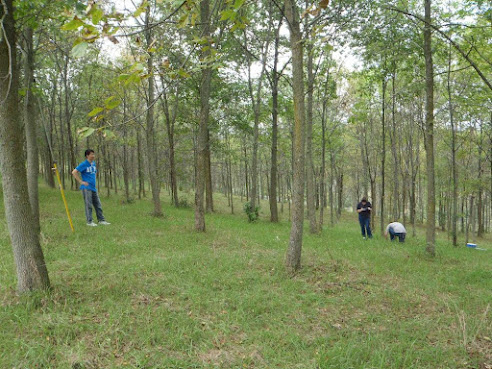Since the 1990s, scientists have been predicting that North American tree species will disappear from portions of their ranges within the next 50 to 100 years because of projected changes in climate. A new study led by Penn State forest biologists found that when transplanted to warmer environments, ash trees can survive increased temperatures of 7 degrees Fahrenheit and sometimes even up to 18 degrees Fahrenheit, suggesting that these trees may be more resilient to climate warming than previously believed.
“We know that species distribution models based only on climate are biologically imperfect,” said lead researcher Kim Steiner, professor emeritus of forest biology in the College of Agricultural Sciences. “However, they are the best we have for predicting where species would be found in a climatically different future, and it is extremely difficult — especially with trees — to experimentally test and possibly refute such predictions."
Because trees grow slowly, it takes decades to draw accurate conclusions about their ability to survive in an altered climate, added Steiner, who recently retired as director of The Arboretum at Penn State. He explained that this study focused on an experimental test of what happens when populations of two eastern North American tree species were moved to warmer or colder climates for an average of 35 years.
The researchers had access to two data sets, each based on multiple experimental plantations of ash. One of those sets of plantations was from an experiment Steiner started with green ash in 1975; the other was from an experiment with white ash started by the U.S. Forest Service two years earlier.
Instead of asking, “What happens to a species when the climate changes,” the researchers asked, “What happens to the offspring of a wild population when you move it to a new climate?”
“This was a legitimate approach to the question because extinction is a population-by-population process,” Steiner said. “We know from many decades of research worldwide that wild tree populations are genetically better adapted to their native climates than to climates elsewhere,”
The researchers “imposed” climate change by moving trees from 56 green ash populations and 46 white ash populations to plantations in six states, from Maine to Kentucky to Kansas, that were varying degrees warmer or colder than the trees’ native environments. While allowing the trees to grow for an average of 35 years, the team measured the trees’ responses in survival and growth as a function of the climatic distance — defined by the amount of warming or cooling — of the move.
The researchers, who recently published their findings in Diversity and Distributions, reported that they could detect no significant mortality associated with climatic displacements of as much as 7 degrees Fahrenheit in either species — which is greater warming than expected in this century based on most climate models. Also, they found 40% or greater survival in most instances of ash populations exposed to warming levels of 12 to 18 F. In most cases, the trees could withstand nearly as much cooling.
As expected, the climatic distance was a significant predictor of survival and growth, the researchers said, but other factors, such as within-population genetic variation or test site-specific influences, were more important. They could not predict reliably whether trees would live, or die, beyond the 35-year study period, simply based upon the amount of warming or cooling.
“We saw evidence of physiological adjustment, which is something to be expected in trees that are capable of living for centuries in changing environments,” Steiner said. “Trees moved from warmer climates were initially relatively fast-growing but slowed down with time, and trees moved from colder climates were initially relatively slow growing but sped up with time. Physiological adjustment is not accounted for in species distribution models.”
No populations suffered 100% mortality at any location, the researchers reported, and it appeared that this would continue to be the case until the trees were at least age 50. Results show, they concluded, that trees are much more capable of enduring 50-100 years of novel climates than is assumed in predictions based on species distribution models. Expectations of future tree responses can reasonably be informed by this multi-decade record of experimental data.
Ironically, the trees on which the research was based are gone now. An invasive insect, the emerald ash borer, has since destroyed the plantations, but at the time of measurements it was either not present or present in such low numbers that its effect on survival and growth was negligible. The beetle’s effect on the species has been devastating — in areas of the U.S. where the emerald ash borer has been present since the early 2000s, its feeding activities in the tissue layer just below the bark have been fatal to nearly 100% of ash trees.
“Emerald ash borer was unknown to Americans when these studies were begun,” said Steiner. “We would have wrongly predicted the death of trees from climate change if people had been doing such research, but we would have completely missed the destruction caused by this insect.”
Also contributing to the research were Laura Leites, associate research professor of quantitative forest ecology, Penn State; Lake Graboski, now an environmental technician at Mountain Research LLC and Hydrochem, a division of Mountain Research; Jennifer Berkebile, now materials program manager at Pennsylvania Certified Organic; and Songlin Fei, Department of Forestry and Natural Resources, Purdue University.
The U.S. Department of Agriculture’s Forest Service and USDA’s National Institute of Food and Agriculture supported this work.
Source/Credit: Pennsylvania State University / Jeff Mulhollem
en012722_01









.jpg)